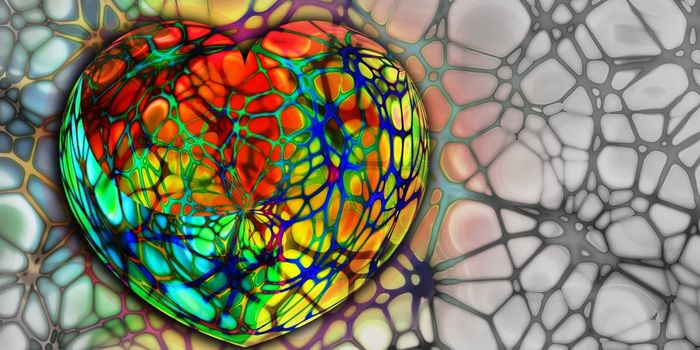Sequencing of Koala Genome Provides Insight Into the Unique Species
Koalas are fascinating animals, and their populations have proven difficult to manage. In some areas of their range, they are dwindling but in others, their numbers are increasing; they are also threatened by habitat loss. To aid in the effort to conserve this iconic species, an international team of scientists has sequenced the complete koala genome. This high-quality data is expected to provide many new insights into the health and preservation of koalas; it was reported in Nature Genetics . Professor Rebecca Johnson, Director of the Australian Museum Research Institute and Professor Katherine Belov, University of Sydney, led a team of 54 scientists from 7 countries.
"The Koala Genome Consortium has been an ambitious journey affording us great insights into the genetic building blocks that make up a koala - one of Australia's, as well as the world's, most charismatic and iconic mammals," noted Professor Johnson. "This milestone has come from our vision to use genomics to conserve this species. The genetic blueprint has not only unearthed a wealth of data regarding the koalas unusual and highly specialized diet of eucalyptus leaves but also provides important insights into their immune system, population diversity and the evolution of koalas.”
Slightly bigger than the human genome, koalas have around 3.4 billion base pairs and over 26,000 genes in their genome. New sequencing techniques were combined with supercomputers to manage the wealth of data. “The genome provides a springboard for the conservation of this biologically unique species,” said Belov.
"Koala numbers have plummeted in northern parts of its range since European settlement, but have increased in some southern parts, notably in Victoria and South Australia,” said Johnson. "Effective management of these animals has been impeded by differences between groups.
"The genome enables a holistic and scientifically grounded approach to koala conservation. Australia has the highest mammal extinction record of any country during the Anthropocene” she added.
"We could never have imagined, when we were pioneering koala genetics in the 1980s, that one day we'd have the entire koala genome sequence. This opens up all sorts of ways we can monitor the genetic health of koala populations,” commented Professor Jennifer Graves, AO, Distinguished Professor of Genetics, La Trobe University.
The Cytochrome P450 family of genes encodes for metabolic enzymes that are critical to detoxification. Consortium members at the Earlham Institute (EI) in Norwich, UK identified enlargements in that gene family in koala tissues. Those alterations have probably played a role in the dietary specialization of koalas.
Professor Johnson explained that "this probably helped them to find their niche to survive, as they could rely on a food source that would have less competition from other species who were not able to detoxify as effectively."
Koalas develop in a pouch like other marsupials and don’t have any immune system at birth. They’re in the pouch for six months after 34 to 36 days of gestation, and the milk they consume is critical to their development. This work has also revealed more about the composition of that milk.
"We characterized the main components of the mothers' milk - which is crucial for koala joeys - born the size of a kidney bean and weighing half of one gram," Professor Belov said. "We identified genes that allow the koala to fine-tune milk protein composition across the stages of lactation, to meet the changing needs of their young."
"Thanks to the high-quality genome, the team was able to analyze and discover koala-specific milk proteins that are critical for various stages of development. It also appears these proteins may have an antimicrobial role, showing activity against a range of bacterial and fungal species, including Chlamydia pecorum, the strain known to cause ocular and reproductive disease in koalas," she added.
Chlamydia and another virus are threatening koala populations, and scientists hope to address these issues.
"In addition to Chlamydia, the other major infection that is threatening the species is koala retrovirus (KoRV), however very little is presently known about it. The complete koala genome has been instrumental in showing that an individual koala can have many (more than a hundred) insertions of KoRV into its genome, including many versions of KoRV,” said Professor Peter Timms, University of the Sunshine Coast. "This information will enable to determine which strains of KoRV are more dangerous and to assist with our development of a KoRV vaccine.”
The team also hopes to ensure that diversity is maintained in these animals. Inbreeding can be a serious problem when habitat is lost and animals are put under pressure. Survival is challenged when a population dwindles to members that have the same genetic composition.
"For the first time, using over 1000 genome linked markers, we are able to show that NSW and QLD populations show significant levels of genetic diversity and long-term connectivity across regions,” said Professor Johnson. ”Ensuring this genetic diversity is conserved in concert with other conservation measures to protect habitat, reduce vehicle strikes, dog attacks, and disease, are the keys to the long-term survival of the koala."
All of the sequence data generated by The Koala Genome Consortium has been deposited into public databases and made freely available to scientists around the world.
"Not only does open data promote the best interests of science, it also maximizes the benefits that the koala populations, and the public, receive from such research," Professor Johnson said.
Sources: AAAS/Eurekalert! Via University of Sydney, Nature Genetics









